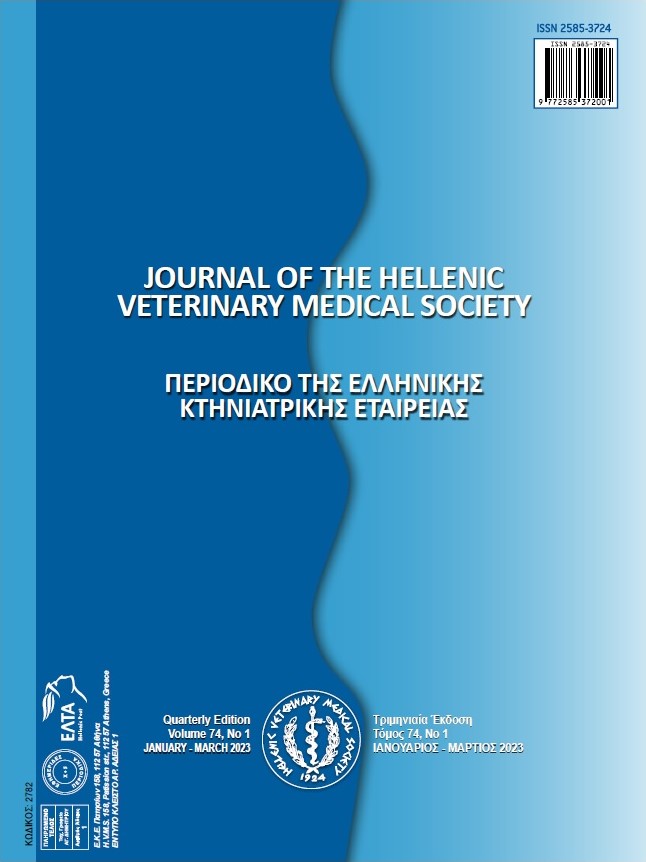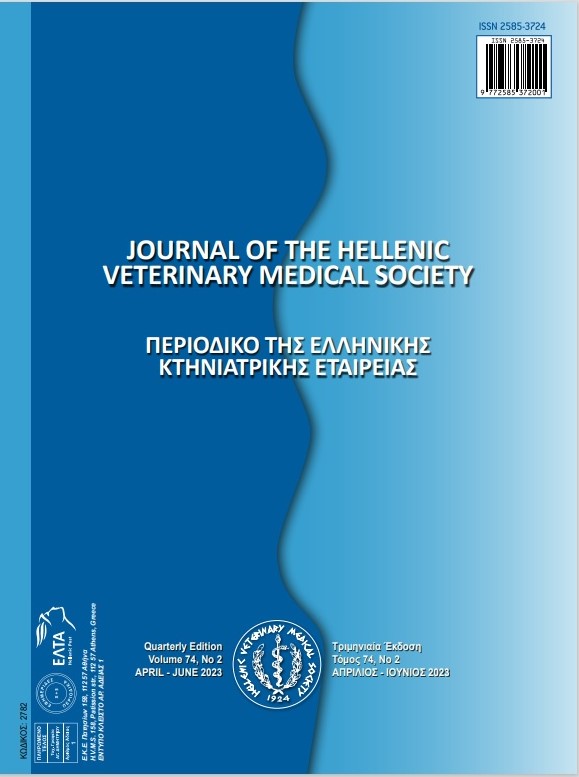Comparative study on genotypic properties of Pseudomonas aeruginosa isolated from subclinical mastitis in Türkiye

Περίληψη
The results of antibacterial therapy in mastitis may be related to not only the antibiotic sensitivity of the etiological factors, but also to their abilities carrying integron and virulence genes. Integrons are mobile DNA element that can capture and carry genes, particularly those responsible for antibiotic resistance. Pseudomonas aeroginosa has numberless virulence factors which are contributed to bacterial invasion and toxicity. The aim of this study is to investigate antibiotic resistance, integron and virulence gene profiles of P. aeruginosa isolates obtained from cow milk with subclinical mastitis; further, was to evaluate the relationship between the antimicrobial resistance of bacteria with the of integron and virulence gene carrying. Material of the study is consisted with 32 (9.8%) of P. aeruginosa isolates obtained from 326 subclinical mastitic milk samples. After the bacterial identification was done by classical conventional methods, polymerase chain reaction (PCR) was used to verify the genus and species identifications of the isolates and to determine the integron and virulence gene profiles. Using disk diffusion method, antimicrobial resistance was determined to fifteen antibiotics against belonging to eleven antimicrobial families. The relationship the presence of integron and virulence genes associated with antibiotic resistance, further the relationship the presence of virulence genes and antimicrobial resistance was calculated with the Chi-Square (χ2) test. Ten of virulence genes (lasl, lasR, lasB, rhll, rhlR, rhlAB, plcH, plcN, ppyR, exoT) were found in all isolates whilst a virulence gene (aprA) was not present in any isolate. It was found that 34.4% of the isolates carried any integron gene. The results showed that the relationship is important between the presence of int genes and gentamicin, amikacin, tetracycline, cefoperazone, imipenem, aztreonam, ciprofloxacin, enrofloxacin resistance and exoU virulence gene presence. Also; there were also important associations between resistance to certain antibiotics and the presence of P. aeroginosa virulence genes: ciprofloxacin with lasA; netilmicin, cefoperazone and ciprofloxacin with pilB; netilmicin and ciprofloxacin with pelA; amikacin with algD, algU, algL; aztreonam with toxA; enrofloxacin with pvdA. All isolates obtained in this study showed multiple antibiotic resistance (MDR). In these cases, the presence of integron and some virulence genes could play a prominent role in the resistance of P. aeroginosa isolates to antimicrobial drugs. This study could be important in that it is the first study to show the presence of integrons and virulence genes in P. aeroginosa isolates originating from mastitic cow milk in Turkey. The presence of antibiotic-resistant P. aeroginosa strains in cattle farms may also pose a public health risk, as these bacteria can transmit their resistance genes to humans through food consumption.
Λεπτομέρειες άρθρου
- Πώς να δημιουργήσετε Αναφορές
-
Turkyilmaz, S., & Ocak, F. (2023). Comparative study on genotypic properties of Pseudomonas aeruginosa isolated from subclinical mastitis in Türkiye. Περιοδικό της Ελληνικής Κτηνιατρικής Εταιρείας, 74(1), 5387–5402. https://doi.org/10.12681/jhvms.29590 (Original work published 12 Απρίλιος 2023)
- Τεύχος
- Τόμ. 74 Αρ. 1 (2023)
- Ενότητα
- Research Articles

Αυτή η εργασία είναι αδειοδοτημένη υπό το CC Αναφορά Δημιουργού – Μη Εμπορική Χρήση 4.0.
Οι συγγραφείς των άρθρων που δημοσιεύονται στο περιοδικό διατηρούν τα δικαιώματα πνευματικής ιδιοκτησίας επί των άρθρων τους, δίνοντας στο περιοδικό το δικαίωμα της πρώτης δημοσίευσης.
Άρθρα που δημοσιεύονται στο περιοδικό διατίθενται με άδεια Creative Commons 4.0 Non Commercial και σύμφωνα με την άδεια μπορούν να χρησιμοποιούνται ελεύθερα, με αναφορά στο/στη συγγραφέα και στην πρώτη δημοσίευση για μη κερδοσκοπικούς σκοπούς.
Οι συγγραφείς μπορούν να καταθέσουν το άρθρο σε ιδρυματικό ή άλλο αποθετήριο ή/και να το δημοσιεύσουν σε άλλη έκδοση, με υποχρεωτική την αναφορά πρώτης δημοσίευσης στο J Hellenic Vet Med Soc
Οι συγγραφείς ενθαρρύνονται να καταθέσουν σε αποθετήριο ή να δημοσιεύσουν την εργασία τους στο διαδίκτυο πριν ή κατά τη διαδικασία υποβολής και αξιολόγησής της.



